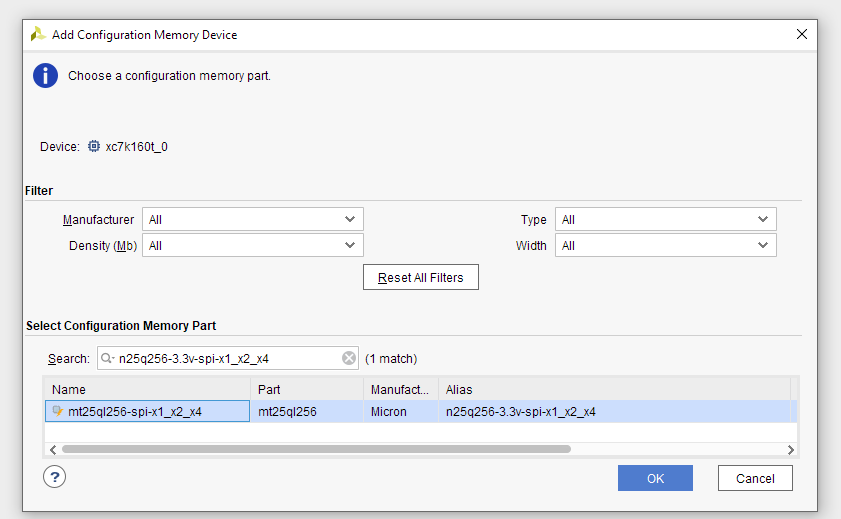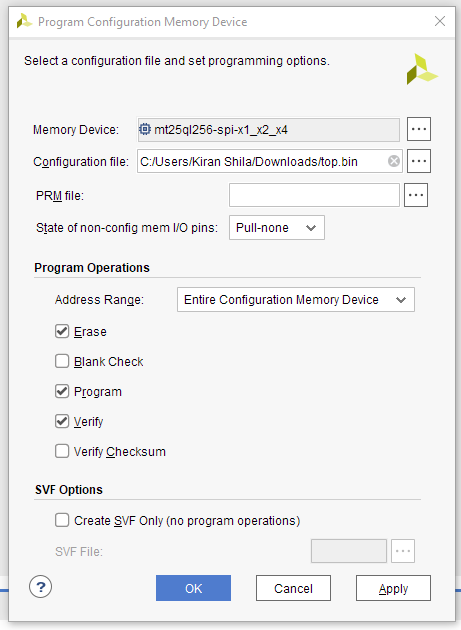SNAP Configuration and Bringup
The digital backend to the GReX system is a SNAP board from the CASPER group at Berkeley. This board contains the analog to digital converters and Xilinx FPGA to perform the digitization and F-engine components of the system.
The setup and configuration of this board has seemingly never been well documented, so we'll try to make it as painless as possible here. c The FPGA Simulink model is stored here with the latest releases found here. Grab the latest fpg file, and you're good to go - no reason to recompile it.
SNAP Golden Image
To document the steps that are performed before shipping a box, here are the steps to program the golden (bootstrapping) image:
Set switch S1 on the SANP so that switches 2 and 5 are set to on. (In the on position, the switches are moved towards the edge of the PCB). The other switches on S1 should be off. This allows the SNAP to boot from the nonvolatile flash memory.
To flash this storage device, you need the free Vivado Lab Edition (VLE) and the expensive Xilinx Platform Cable.
After launching VLE, click Open hardware manager. After this, a green bar at the top should ask you to autoconnect. Assuming the platform cable is plugged into the SNAP and everything is powered on, click on that. It should connect and show the xc7k160t FPGA in the hardware section on the left.

In VLE, under tools go to Add configuration memory device.
Use the memory device n25q256-3.3v-spi-x1_x2_x4.

It will then ask if you want to program the memory now, hit Ok.
Using the golden image for the configuration file here, program the entire configuration memory device.

Unplug programmer before rebooting. All done! A reboot should start blinking some LEDs and the ethernet should get a DHCP address (if it's plugged in).
TAPCP and the Raspberry Pi
The gateware we've built for the SNAP board includes a small CPU called the MicroBlaze that hosts a small webserver to deal with runtime interactions with FPGA memory. This server gets an IP address from a DHCP server running on the main capture computer. This interface can also be used to reprogram the SNAP if the gateware changes. By deafult, we'll ship SNAP boards that have the GReX gateware preprogramed, but it's always possible to reprogram it.
This interface is over the UDP protocol TFTP, where the folks at CASPER have wrapped reading and writing files as the interaction to both the flash and FPU memory. We've written a wrapper to the so called "TAPCP" protocol here. It is with this library that the packet capture code informs the SNAP when to activate timing signals.
FPGA Clocks, References, PPS, Synthesizers
The FPGA needs an external clock source, which is being provided via one of the outputs of the Valon synthesizer in the box. Additionally, the board needs "pulse per second" (PPS) ticks, which come from the GPS reciever.
The Valon synthesizer has two outputs but can lock both to an external reference. The GPS receiver in the box provides this (10 MHz) alongside the PPS signal.
SNAP Operation
Controlling the Gateware
UDP Payloads
Once the pipeline is running, the SNAP will be streaming high-speed data over UDP to the processing server. These UDP frames contain one timestep of both polarizations in 8+8 bit complex data. Additionally, the payload starts with a 64-bit header that is the number of frames since the first one. Assuming you record the time when you trigger the start of packets, you can then work out the associated timestamp of the packet using the fact that every packet arrives in a 8.192us cadence.
The format of the payload itself has a C struct compatible layout.
+-----------------------------------------------------------------------+
| Timestamp (unsigned 64-bit, little-endian integer) |
+-----------------------------------------------------------------------+
| A0000R | A0000I | A0001R | A0001I | A0002R | A0002I | A0003R | A0003I |
| ... |
| A2044R | A2044I | A2045R | A2045I | A2046R | A2046I | A2047R | A2047I |
+-----------------------------------------------------------------------+
| B0000R | B0000I | B0001R | B0001I | B0002R | B0002I | B0003R | B0003I |
| ... |
| B2044R | B2044I | B2045R | B2045I | B2046R | B2046I | B2047R | B2047I |
+-----------------------------------------------------------------------+
Where XnnnnR + XnnnnI*j is the complex voltage data of polarization X (either A or B), channel nnnn where 0000 is 1530 MHz and 2047 is 1280 MHz. The components are signed bytes.